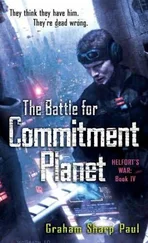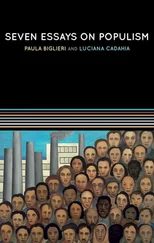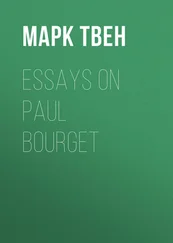Paul Graham - Essays
Здесь есть возможность читать онлайн «Paul Graham - Essays» весь текст электронной книги совершенно бесплатно (целиком полную версию без сокращений). В некоторых случаях можно слушать аудио, скачать через торрент в формате fb2 и присутствует краткое содержание. Жанр: Прочая околокомпьтерная литература, на английском языке. Описание произведения, (предисловие) а так же отзывы посетителей доступны на портале библиотеки ЛибКат.
- Название:Essays
- Автор:
- Жанр:
- Год:неизвестен
- ISBN:нет данных
- Рейтинг книги:4 / 5. Голосов: 1
-
Избранное:Добавить в избранное
- Отзывы:
-
Ваша оценка:
- 80
- 1
- 2
- 3
- 4
- 5
Essays: краткое содержание, описание и аннотация
Предлагаем к чтению аннотацию, описание, краткое содержание или предисловие (зависит от того, что написал сам автор книги «Essays»). Если вы не нашли необходимую информацию о книге — напишите в комментариях, мы постараемся отыскать её.
Essays — читать онлайн бесплатно полную книгу (весь текст) целиком
Ниже представлен текст книги, разбитый по страницам. Система сохранения места последней прочитанной страницы, позволяет с удобством читать онлайн бесплатно книгу «Essays», без необходимости каждый раз заново искать на чём Вы остановились. Поставьте закладку, и сможете в любой момент перейти на страницу, на которой закончили чтение.
Интервал:
Закладка:
I think it's because humor is related to strength. To have a sense of humor is to be strong: to keep one's sense of humor is to shrug off misfortunes, and to lose one's sense of humor is to be wounded by them. And so the mark-- or at least the prerogative-- of strength is not to take oneself too seriously. The confident will often, like swallows, seem to be making fun of the whole process slightly, as Hitchcock does in his films or Bruegel in his paintings-- or Shakespeare, for that matter.
Good design may not have to be funny, but it's hard to imagine something that could be called humorless also being good design.
If you look at the people who've done great work, one thing they all seem to have in common is that they worked very hard. If you're not working hard, you're probably wasting your time.
Hard problems call for great efforts. In math, difficult proofs require ingenious solutions, and those tend to be interesting. Ditto in engineering.
When you have to climb a mountain you toss everything unnecessary out of your pack. And so an architect who has to build on a difficult site, or a small budget, will find that he is forced to produce an elegant design. Fashions and flourishes get knocked aside by the difficult business of solving the problem at all.
Not every kind of hard is good. There is good pain and bad pain. You want the kind of pain you get from going running, not the kind you get from stepping on a nail. A difficult problem could be good for a designer, but a fickle client or unreliable materials would not be.
In art, the highest place has traditionally been given to paintings of people. There is something to this tradition, and not just because pictures of faces get to press buttons in our brains that other pictures don't. We are so good at looking at faces that we force anyone who draws them to work hard to satisfy us. If you draw a tree and you change the angle of a branch five degrees, no one will know. When you change the angle of someone's eye five degrees, people notice.
When Bauhaus designers adopted Sullivan's "form follows function," what they meant was, form should follow function. And if function is hard enough, form is forced to follow it, because there is no effort to spare for error. Wild animals are beautiful because they have hard lives.
Like great athletes, great designers make it look easy. Mostly this is an illusion. The easy, conversational tone of good writing comes only on the eighth rewrite.
In science and engineering, some of the greatest discoveries seem so simple that you say to yourself, I could have thought of that. The discoverer is entitled to reply, why didn't you?
Some Leonardo heads are just a few lines. You look at them and you think, all you have to do is get eight or ten lines in the right place and you've made this beautiful portrait. Well, yes, but you have to get them in exactly the right place. The slightest error will make the whole thing collapse.
Line drawings are in fact the most difficult visual medium, because they demand near perfection. In math terms, they are a closed-form solution; lesser artists literally solve the same problems by successive approximation. One of the reasons kids give up drawing at ten or so is that they decide to start drawing like grownups, and one of the first things they try is a line drawing of a face. Smack!
In most fields the appearance of ease seems to come with practice. Perhaps what practice does is train your unconscious mind to handle tasks that used to require conscious thought. In some cases you literally train your body. An expert pianist can play notes faster than the brain can send signals to his hand. Likewise an artist, after a while, can make visual perception flow in through his eye and out through his hand as automatically as someone tapping his foot to a beat.
When people talk about being in "the zone," I think what they mean is that the spinal cord has the situation under control. Your spinal cord is less hesitant, and it frees conscious thought for the hard problems.
I think symmetry may just be one way to achieve simplicity, but it's important enough to be mentioned on its own. Nature uses it a lot, which is a good sign.
There are two kinds of symmetry, repetition and recursion. Recursion means repetition in subelements, like the pattern of veins in a leaf.
Symmetry is unfashionable in some fields now, in reaction to excesses in the past. Architects started consciously making buildings asymmetric in Victorian times and by the 1920s asymmetry was an explicit premise of modernist architecture. Even these buildings only tended to be asymmetric about major axes, though; there were hundreds of minor symmetries.
In writing you find symmetry at every level, from the phrases in a sentence to the plot of a novel. You find the same in music and art. Mosaics (and some Cezannes) get extra visual punch by making the whole picture out of the same atoms. Compositional symmetry yields some of the most memorable paintings, especially when two halves react to one another, as in the Creation of Adam or American Gothic.
In math and engineering, recursion, especially, is a big win. Inductive proofs are wonderfully short. In software, a problem that can be solved by recursion is nearly always best solved that way. The Eiffel Tower looks striking partly because it is a recursive solution, a tower on a tower.
The danger of symmetry, and repetition especially, is that it can be used as a substitute for thought.
It's not so much that resembling nature is intrinsically good as that nature has had a long time to work on the problem. It's a good sign when your answer resembles nature's.
It's not cheating to copy. Few would deny that a story should be like life. Working from life is a valuable tool in painting too, though its role has often been misunderstood. The aim is not simply to make a record. The point of painting from life is that it gives your mind something to chew on: when your eyes are looking at something, your hand will do more interesting work.
Imitating nature also works in engineering. Boats have long had spines and ribs like an animal's ribcage. In some cases we may have to wait for better technology: early aircraft designers were mistaken to design aircraft that looked like birds, because they didn't have materials or power sources light enough (the Wrights' engine weighed 152 lbs. and generated only 12 hp.) or control systems sophisticated enough for machines that flew like birds, but I could imagine little unmanned reconnaissance planes flying like birds in fifty years.
Now that we have enough computer power, we can imitate nature's method as well as its results. Genetic algorithms may let us create things too complex to design in the ordinary sense.
It's rare to get things right the first time. Experts expect to throw away some early work. They plan for plans to change.
It takes confidence to throw work away. You have to be able to think, there's more where that came from. When people first start drawing, for example, they're often reluctant to redo parts that aren't right; they feel they've been lucky to get that far, and if they try to redo something, it will turn out worse. Instead they convince themselves that the drawing is not that bad, really-- in fact, maybe they meant it to look that way.
Dangerous territory, that; if anything you should cultivate dissatisfaction. In Leonardo's drawings there are often five or six attempts to get a line right. The distinctive back of the Porsche 911 only appeared in the redesign of an awkward prototype. In Wright's early plans for the Guggenheim, the right half was a ziggurat; he inverted it to get the present shape.
Читать дальшеИнтервал:
Закладка:
Похожие книги на «Essays»
Представляем Вашему вниманию похожие книги на «Essays» списком для выбора. Мы отобрали схожую по названию и смыслу литературу в надежде предоставить читателям больше вариантов отыскать новые, интересные, ещё непрочитанные произведения.
Обсуждение, отзывы о книге «Essays» и просто собственные мнения читателей. Оставьте ваши комментарии, напишите, что Вы думаете о произведении, его смысле или главных героях. Укажите что конкретно понравилось, а что нет, и почему Вы так считаете.











